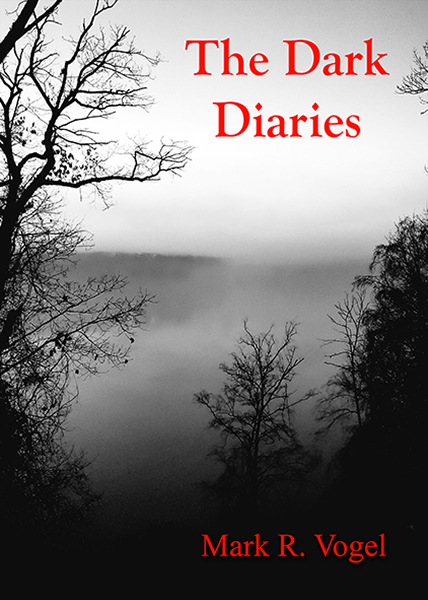Seeking to capitalize upon the success of George Romero’s Night of the Living Dead, Flaminia Produzioni Cinematografiche approached director Jorge Grau, who just completed one of the more faithful adaptations of the Elizabeth Bathory legend with Blood Castle, with the offer to direct a colorized zombie tale. Yet, instead of merely parroting his American predecessor, Grau seized the opportunity to create his own horrific undead metaphor, veiled as a cautionary tale, while nonetheless fashioning nothing short of a masterfully written and directed indictment upon bigotry and belligerence in the form of a skillfully narrated suspense thriller.
After being obligated to bring George (Ray Lovelock) along with her after rear ending his motorcycle, Edna (Cristina Galbó) arrives at the home of her sister, Katie (Jeannine Mestre), who is being held in seclusion by her estranged husband, Martin (José Lifante), in the hopes that her isolation will cure her heroin addiction. Shortly after their arrival, Martin is murdered by a man (Fernando Hilbeck) whom Edna claims to be the remains of an individual who accosted her while George was asking for directions to Katie’s and that reportedly drowned in the area two weeks prior. As George endeavors to discover who was responsible for the crime, a haggard, jaded police inspector (Arthur Kennedy) actively attempts to create a case against the couple.
What is most interesting in regards to Grau’s work is that, beginning with the opening scene, we are made aware that the director has an agenda outside of merely shadowing the success of Romero’s cult classic as we are granted a collage of images of a cramped, dirty London, inhabited by people anxiously brandishing masks in hopes to protecting themselves from the seemingly countless smoke stack effusions whose effects cease to spare even the smallest, most innocent victim, such as a sparrow who lies dead amid the urban refuse. However, by the climax of the tale, we come to realize that the filmmaker’s ethical itinerary was merely a catalyst for a bigger fish he sought to fry as the status quo celebrates a premature victory, won by way of didactic self-righteousness and bigotry, though we are also made aware that its comeuppance is forthcoming in the form of an undead plague. What results is not an environmental cautionary tale, for the film all but declares that preventative measures in this regard are now token gestures, but that rectification of humanity’s petulance will undoubtedly arrive, but not as we would have it.
Aside from the engaging, scathingly honest underpinning, Let Sleeping Corpses Lie is a well written work which, unlike many films imitating Night of the Living Dead, is masterfully directed, shot, and paced as the tension is compounded, not only by the presence of the ensuing undead plight, but by a biased police investigation goaded by hatred and bitterness. Ingeniously, Grau begins mounting the tension shortly after the film opens as an antagonism between George and Edna quickly emerges as Grau dualistically fleshes out his characters. Perhaps the most impressive instance in which he keeps his audience on pins-and-needles occurs when Edna approaches George while the latter is in a payphone. He then exits in order to receive information concerning Katie as we are left behind the glass partition amid the now muffled dialogue, thus Grau leaves us at bay in regards to whatever, seemingly vital, plot revelations are being disclosed. In this regard, once it is revealed that Martin is not the authoritarian asshole he was first portrayed (as we perceived him) to be as we are informed that he has placed Katie in solitude in hopes of saving her life, we freely give ourselves over to the director and eagerly await him to give us more of the same (which he doesn’t disappoint for the particular situation becomes ironic by the finale).
In many respects, the key to the work, both philosophically as well as narratively, is the vicious hatred of the inspector toward George–not on any personal level but as a consequence of what we are subtly given to believe is the resentment of a career and life which went unappreciated in the form of promotions and accolades–which serves as a signpost for the age as the conservative mindset of yesteryear that is still very much in power is readily cognizant of its diminishing hold upon the changing times. Obviously, even in the event that a zombie were to present itself to the inspector, he would be hard pressed to accept the fact that George, the figurehead of the inspector’s dwindling authority, is not the guilty party. The inspector’s prejudice is epitomized by his pronunciation to George that, “You’re all the same the lot of you, with your long hair and faggot clothes. Drugs, sex, every sort of filth!”
As only one who is in complete control of such a complex agenda could achieve, Grau manages not only to present his multi-faceted tale, but undercuts and juxtaposes the severity of what we are being given with effective instances of humor. As a team of scientists tests an experimental form of ultrasonic radiation in a field not far from where the undead are emerging–at the report that the new technology causes lower life forms to engage in homicidal bouts of rage–George repeatedly questions if it is definite that negative side effects are not a possibility, to which a worker hostilely responds, “Does it look like I’m gonna attack you?” Only a script assured that it successfully fleshed out a character would have a counterculture skeptic coyly retort to an elderly hotel manager’s citation that her business, “[ . . . ] is a respectable place” with “Yes, yes. I can tell. I intend to spend as little time here as possible.”
There is nary a missed step in Jorge Grau’s Let Sleeping Corpses Lie with the exception of the soundtrack which, in lieu of most every other aspect of this admirably competent work, is barely worth positing as a complaint. As the director challenges us time and time again, not only with his densely comprised plot, but thematically as he holds a mirror up to our psychological and philosophical selves, we are left with no other choice but to applaud. Interestingly, I could not help but find the work reminiscent (but by no means plagiaristic), both narratively as well as thematically, of Robin Hardy’s The Wicker Man, released earlier in the year. Indeed, the work–as is Hardy’s–is, at base, a sign of the times which, if nothing else, reminds us of how little we have come since the creation of both masterpieces.
Trivia tidbit: Let Sleeping Corpses Lie is one of the notorious Video Nasties under the Hatcherian regime during the 1980’s.
-Egregious Gurnow
- Interview with J.R. Bookwalter - January 22, 2015
- Interview with Andrew J. Rausch - January 22, 2015
- Interview with Rick Popko and Dan West - January 22, 2015
- Interview with Director Stevan Mena (Malevolence) - January 22, 2015
- Interview with Screenwriter Jeffery Reddick (Day of the Dead 2007) - January 22, 2015
- Teleconference interview with Mick Garris (Masters of Horror) - January 22, 2015
- A Day at the Morgue with Corri English (Unrest) - January 22, 2015
- Interview with Writer/Director Nacho Cerda (The Abandoned, Aftermath) - January 22, 2015
- Interview with Actress Thora Birch (Dark Corners, The Hole, American Beauty) - January 22, 2015
- Interview with Actor Jason Behr, Plus Skinwalkers Press Coverage - January 22, 2015


